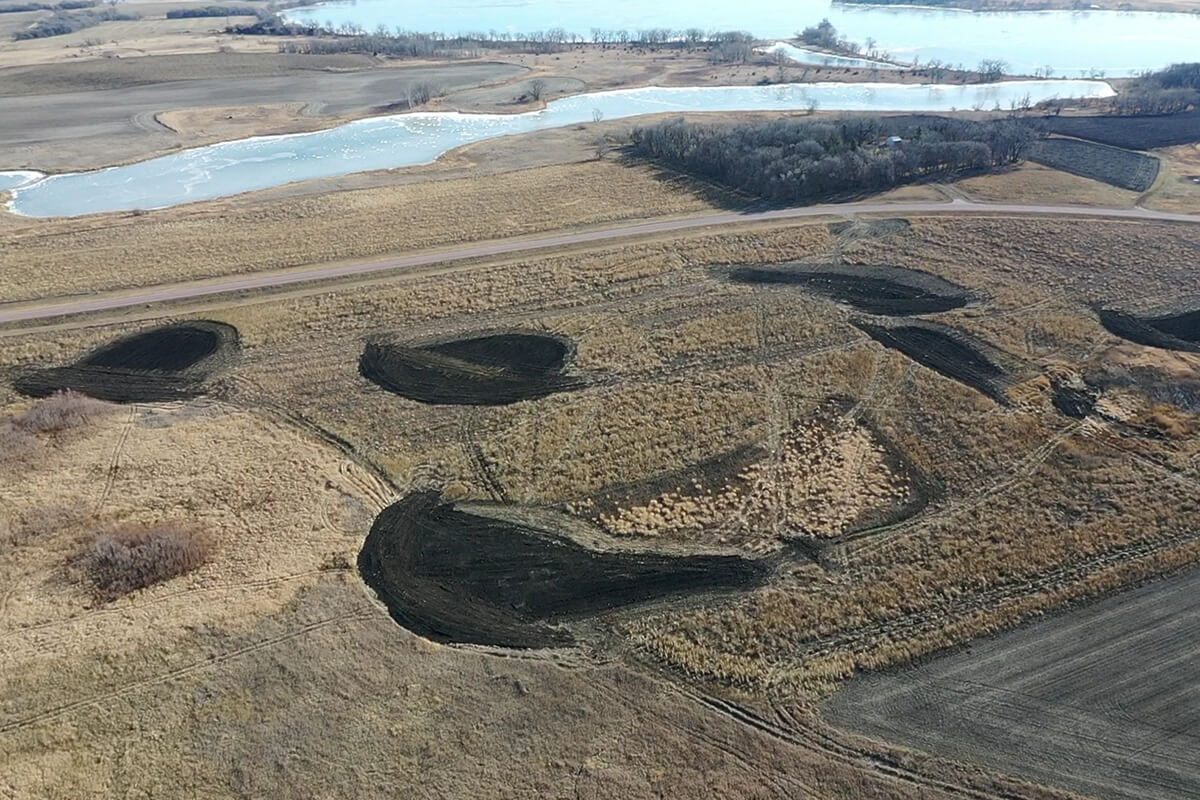Native Wetland Habitat, Grasslands Restored at Minnesota’s Chen Bay WMA
The 157-acre project provides critical nesting cover for waterfowl and improved water quality
The 157-acre project provides critical nesting cover for waterfowl and improved water quality

Western and southern Minnesota are well-known and important haven for breeding and migrating waterfowl. Part of the Prairie Pothole Region (PPR), this area historically contained an abundance of wetlands and shallow lakes that ducks, geese and other wildlife rely on for survival. But most of western and southern Minnesota’s prairie pothole wetlands have been drained for human use. Minnesota's prairie has lost 90% of its historical wetlands and 99% of its grasslands, causing a significant drop in waterfowl production and hunter numbers.
“Landscape drainage has eliminated many of our prairie wetlands in Minnesota, which means there are fewer places for ducks to nest,” said Ducks Unlimited (DU) Regional Biologist Jake Chronister. “It’s a major win for wildlife when we can make these kinds of habitat restorations that return wetlands to their native state. It also makes life easier for wetland managers so they can properly maintain the site.”
DU has a long-standing relationship with the Minnesota Department of Natural Resources (MDNR). The two organizations recently partnered on a $1 million, 157-acre project at Chen Bay Waterfowl Management Area near Lake Benton, restoring cropland to native wetlands and prairie. The conservation work will provide nesting cover for waterfowl and create a buffer to Pickerel Lake, which DU and MDNR enhanced in 2015. DU has plans to conserve wetlands on 300 acres (in partnership with the U.S. Fish and Wildlife Service) at Fox and Weber Waterfowl Production Areas, which are adjacent to Chen Bay.
“Chen Bay is another example of a very long and growing list of outstanding projects undertaken by Ducks Unlimited in western Minnesota focused squarely on improving the amount and quality of breeding and migratory waterfowl habitat,” said MDNR Regional Wildlife Manager David Trauba. “All wildlife benefits from this work. Ducks Unlimited is an absolute powerhouse when it comes to putting more habitat on the ground and integral partner in helping achieve conservation goals for our wildlife management area system.”
In 2015, DU engineered a water-control structure and electric pump at Pickerel Lake so that MDNR can periodically lower water levels to remove invasive fish species. The drawdowns also promote the natural growth of aquatic plants and invertebrates. Once water levels are restored, ducks feast on these food sources. Since managers were able to drain stagnant water from the lake, water quality has improved as well. Chen Bay WMA has a direct outlet into 2,600-acre Lake Benton, providing the lake with cleaner water.
“It’s incredible to see the transformation of Pickerel Lake from a cattail-choked wetland full of invasive carp to pristine waterfowl habitat,” Chronister said. “If you were here in August and September, the number of blue-wing teal using this marsh was exceptional. Many different species of puddle ducks nest at Pickerel Lake in the spring as well. The entire area is critical to the health of migratory birds.”
Ducks Unlimited uses cookies to enhance your browsing experience, optimize site functionality, analyze traffic, and deliver personalized advertising through third parties. By continuing to use this site, you agree to our use of cookies. View Privacy Policy